Berberis thunbergii atropurpurea
Japanese Barberry
Japanese Barberry is a popular shrub with a rounded, graceful form. Best with some protection from the sun in hot summer regions. Branches are spiny so it makes a good barrier plant. Accepts shearing to become a hedge. Enjoy orange to red fall color and red berries in fall and winter. Many selections are available. Accepts sandy to heavy clay soils. Canopy coverage: 28 square feet.
[Read More]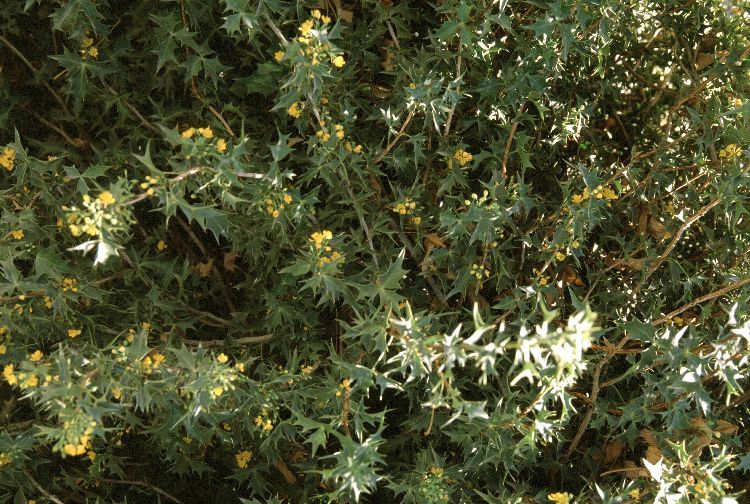
Berberis trifoliata
Desert Barberry
This is a wide-spreading, evergreen shrub, useful for screens and barriers—the sharp, stiff, spiked leaves help make sure of that. Requires little water after plants are established—typically after two summers. Accepts high heat. Bluish black berries follow flowers in late fall and winter. Canopy coverage: 20 square feet.
[Read More]Buddleja alternifolia
Fountain Butterfly Bush
This is a large shrub that can also be trained to become a small tree. Butterflies cannot resist the fragrant flowers. 'Argentea', shown in photos, is an improved selection and a Plant Select plant. Canopy coverage: 113 square feet.
[Read More]Buddleja davidii
Butterfly Bush
Butterfly Bush is a tough, flowering shrub that grows fast to fill an area quickly. Flowers are colorful and fragrant. Canopy coverage: 113 square feet.
[Read More]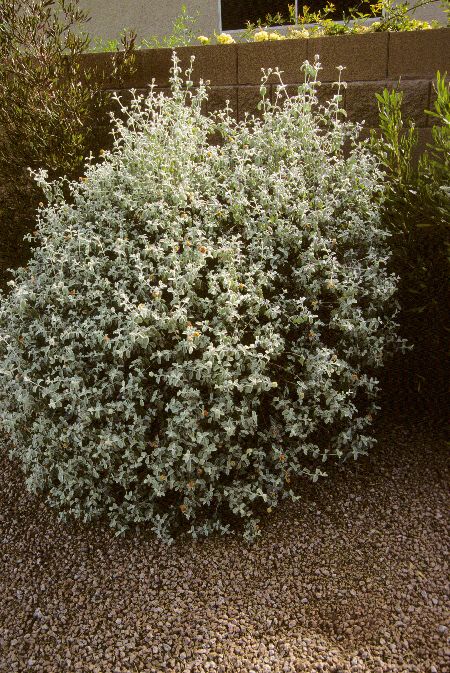
Buddleja marrubifolia
Woolly Butterfly Bush
The silvery leaves of Woolly Butterfly Bush are striking in contrast when placed near green-foliaged plants. Produces distinctive, small, orange, ball-shaped flowers. Canopy coverage: 20 square feet.
[Read More]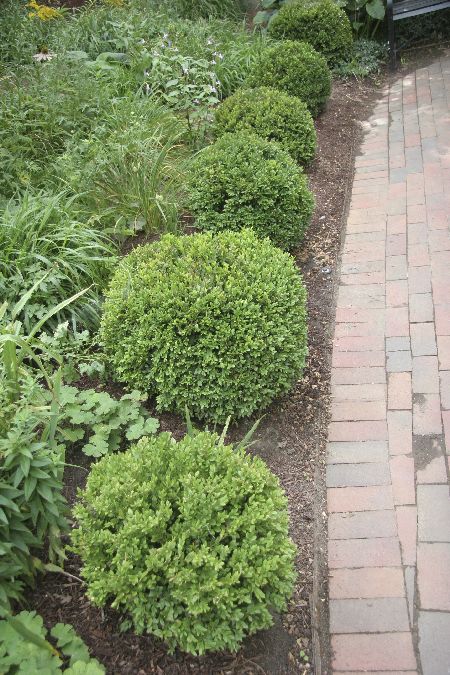
Buxus microphylla var. japonica
Japanese Boxwood
Often grown as a hedge, Japanese Boxwood readily accepts shearing. Best with some protection from the sun in hot summer regions. 'Nana' is a smaller form growing 2 to 4 feet high. Canopy coverage: 28 square feet.
[Read More]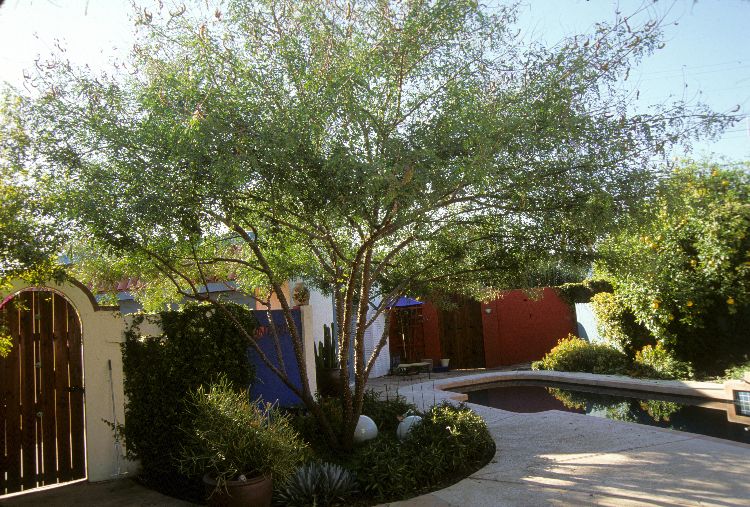
Caesalpinia cacalaco
Cascalote
Cascalote can be trained to become a small, vase-shaped tree. Spike-shaped flowers are profuse winter into spring. Interesting and colorful seed pods follow flowers. Canopy coverage: 177 square feet.
[Read More]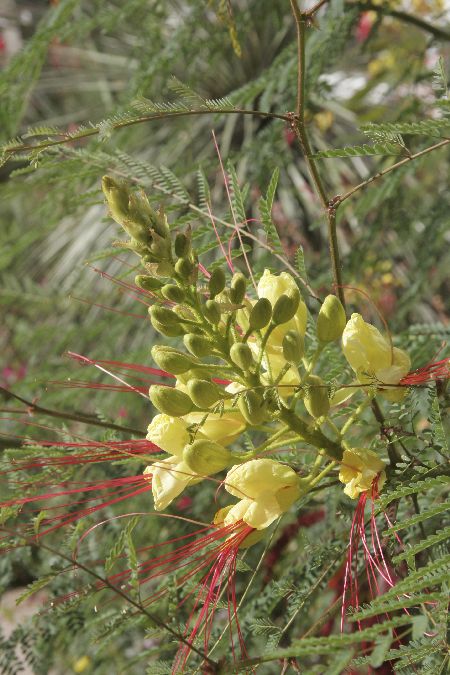
Caesalpinia gilliesii
Yellow Bird of Paradise
Yellow Bird of Paradise provides a tropical effect in the landscape. Red stamens on decorative yellow flowers are dramatic and exotic. Plant form is upright and open. Canopy coverage: 28 square feet.
[Read More]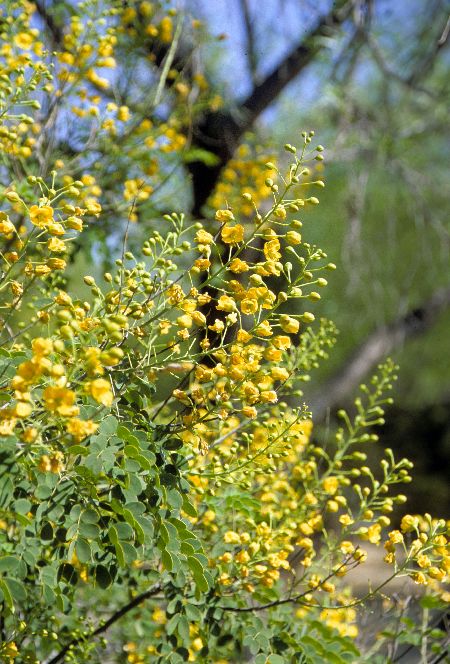
Caesalpinia mexicana
Mexican Bird of Paradise
The flowers of Mexican Bird of Paradise are produced in large dramatic spikes. Where adapted to cold, it can be grown as small tree. Upright and somewhat open appearance. Canopy coverage: 79 square feet.
[Read More]Caesalpinia pulcherrima
Red Bird of Paradise
Provides a tropical effect in the landscape with its dramatic and exotic flowers. The species produces orange flowers; yellow-flowering forms are also available. Plant form is rounded and open. Canopy coverage: 28 square feet.
[Read More]Calliandra californica
Baja Fairy Duster
The striking red powderpuff flowers of Baja Fairy Duster bloom through the growing season. Fine-textured leaves reinforce the subtropical effect. Canopy coverage: 28 square feet.
[Read More]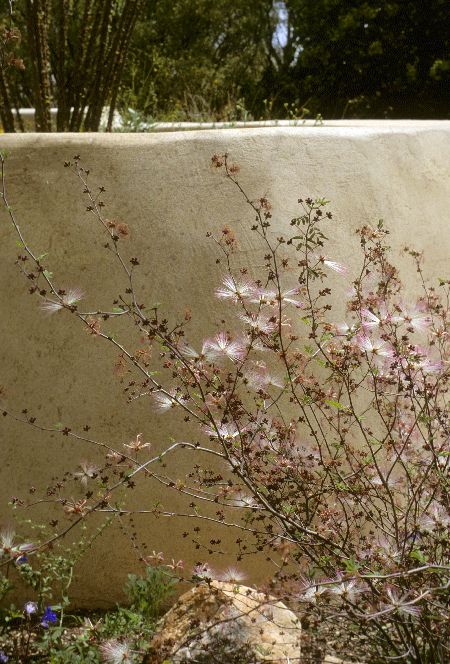
Calliandra eriophylla
Pink Fairy Duster
The delicate flowers of Pink Fairy Duster are attractive rose-pink in color. It has an airy rounded form. Canopy coverage: 7 square feet.
[Read More]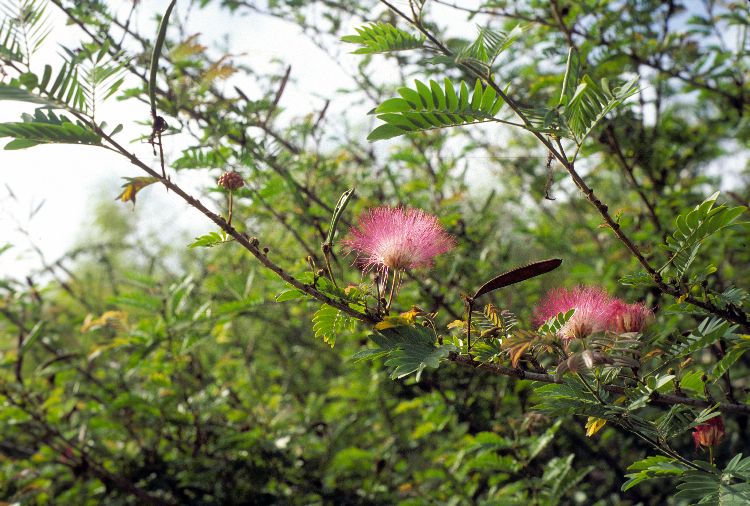
Calliandra haematocephala
Pink Powder Puff
Pink Powder Puff is a cold-tender shrub, but worth the effort where it is adapted. It is helpful to utilize warm microclimates such as against a south-facing wall when locating. Primary feature is the large, 2- to 3-inch, pink puffball flowers. Canopy coverage: 79 square feet.
[Read More]Callistemon citrinus 'Jeffers'
Purple Bottlebrush
Purple Bottlebrush is broadly adapted to less-than-ideal conditions of high heat, cold temperatures and poor soils. Can be pruned to become a small tree. If you are familiar with Bottlebrush, you will recognize the distinctive flowers that look like old-fashioned bottle brushes. These are reddish purple fading to lavender. Canopy coverage: 20 square feet.
[Read More]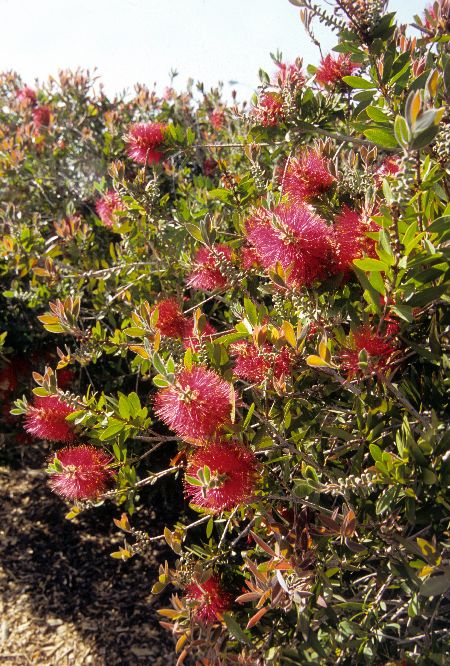
Callistemon citrinus
Lemon Bottlebrush
Lemon Bottlebrush is very accepting of pruning and shaping to become a shrub, screen or patio tree. New growth in spring has interesting coppery color. Rich red bottlebrush-shaped flowers are naturally striking. Canopy coverage: 177 square feet.
[Read More]Callistemon viminalis 'Little John'
Little John Bottlebrush
This hybrid native to Australia is a compact version of the species. Growing in a compact form, it produces the same bottlebrush-shaped flowers over a long period. Makes a mounding groundcover when planted in a mass. Canopy coverage: 7 square feet.
[Read More]Carissa macrocarpa
Natal Plum
Spiny stems make this a suitable barrier plant. Star-shaped flowers are fragrant, followed by red or purple fruit. Accepts some shade. Many improved selections are available, including 'Boxwood Beauty', 'Green Carpet', 'Fancy' and 'Tuttlei'. Canopy coverage: 50 square feet.
[Read More]Celtis occidentalis
Western Hackberry
Adapted to grow in a wide range of climates, Western Hackberry is also known as Common Hackberry. Grows as a large shrub or tree—give it more water for tree form. Best to plant from containers rather than bare root for better establishment. Yellow fall color and small red to purple fruit are attractions. Canopy coverage: 1,963 square feet.
[Read More]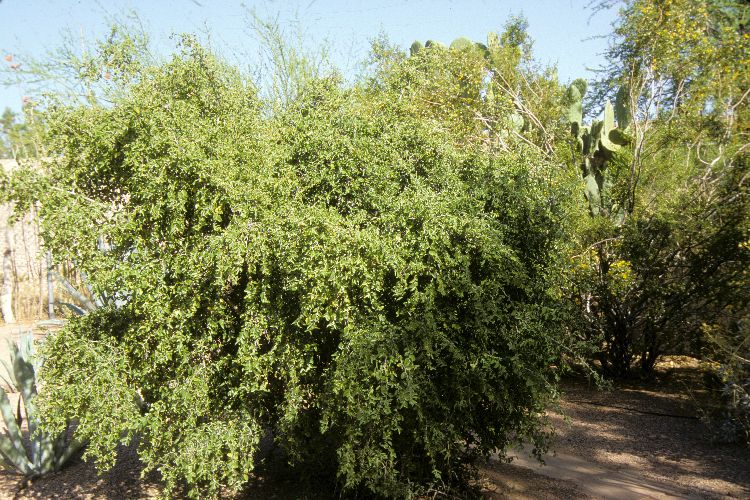
Celtis pallida
Desert Hackberry
This shrub has spiny branches that intertwine, which makes it an excellent barrier or security plant. Evergreen except with very cold temperatures. Birds flock to the berries in winter. Canopy coverage: 79 square feet.
[Read More]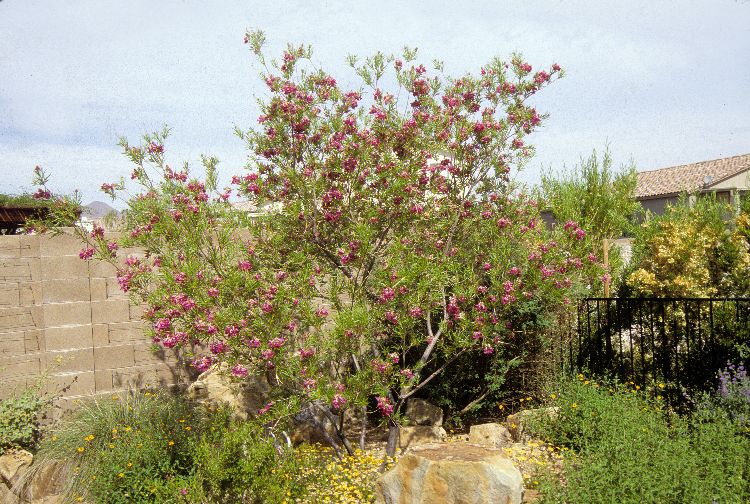
Chilopsis linearis
Desert Willow
Desert Willow is a bulletproof tree for hot-summer regions. Weeping form is appealing, as are the spring flowers. Long brown to tan seedpods add interest in winter. Many selections are available in a range of colors. Canopy coverage: 314 square feet.
[Read More]Chrysothamnus nauseosus
Rabbitbrush
Rabbitbrush is best with some afternoon shade in hot-summer regions. The erect stems mass together to become a mounding shrub. Provides a dramatic blaze of yellow flowers in late fall when little else is in bloom. Canopy coverage: 13 square feet.
[Read More]